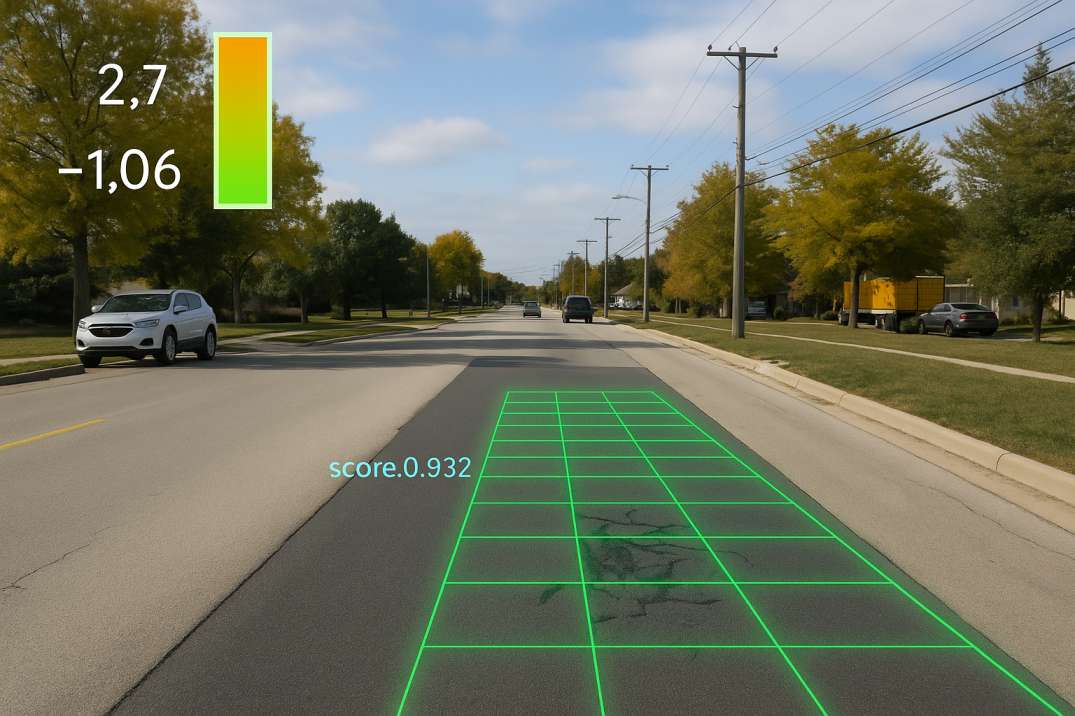Contact Us
RoadVision AI
Private Limited
Office No. 308 & 310, B Block
Ansal Chamber - 1, Bhikaji Cama Place,
Near Engineers India Limited (EIL) Bhawan, New Delhi - 110066
© 2024 | RoadVision AI | All rights reserved
The United States has one of the most expansive and heavily trafficked roadway networks in the world. Maintaining this infrastructure effectively is critical to both public safety and economic growth. Traditionally, road conditions have been evaluated using manual ASTM-based surveys, especially in accordance with ASTM D6433, which provides a standardized method for calculating the Pavement Condition Index (PCI).
However, with the rise of AI road asset management, stakeholders across state DOTs and local municipalities are now questioning: Can AI replace manual ASTM-based road condition surveys?
This blog presents a technical breakdown of how AI compares to manual methods, how it's already being used in the USA, and whether it can meet or exceed the regulatory requirements established under U.S. Department of Transportation (DOT) and Federal Highway Administration (FHWA) frameworks.

The ASTM D6433 standard defines how to inspect pavement surfaces, categorize different distress types (like cracks, potholes, rutting), and calculate a numerical Pavement Condition Index (PCI) between 0 to 100.
This process involves:
While it has been the industry standard in road asset management USA, this method is labor-intensive, time-consuming, and subject to human error and inconsistency.
AI road asset management leverages machine learning, computer vision, and mobile-based systems to automatically detect, classify, and evaluate pavement distresses.
With high-resolution video data and automated mapping tools, AI systems like those from RoadVision AI can scan thousands of miles of roadway at scale.
Key capabilities include:
Read more about AI-based pavement condition surveys.
AI models are trained on extensive datasets and can be calibrated to detect defects in accordance with ASTM distress types. While AI does not replace the ASTM standard itself, it automates the data acquisition and analysis stages.
Unlike manual methods, AI can apply consistent logic across thousands of images without variation due to human fatigue or interpretation.
AI inspections can cover 10x the distance of manual surveys in the same amount of time. Automated vehicles equipped with cameras and GPS systems allow for fast data capture without lane closures or worker exposure to traffic.
By reducing labor hours, vehicle rentals, and subjective error-based rework, AI provides long-term cost savings. Maintenance planning becomes proactive rather than reactive.
While AI is not yet a direct replacement for ASTM compliance in official documentation, it is widely accepted as a valid pre-screening, prioritization, and augmentation tool by agencies including:
Use cases and case studies show that AI can provide PCI scores with accuracy levels acceptable for maintenance planning and budget forecasting.
AI road asset management USA is already being adopted by cities and counties across the country. Tools from RoadVision AI offer services such as:
Combined, these create a digital twin of the road environment for better capital planning and safety evaluation.
Explore expert insights on the RoadVision AI Blog.
The future is hybrid. Rather than replacing ASTM entirely, AI acts as an enabler. Engineers can focus their manual inspections on critical areas, using AI data to guide and verify compliance.
New standards may soon evolve to formally integrate AI-based observations into official PCI calculations. This shift will promote faster decision-making, safer inspections, and more strategic budgeting.
AI road asset management is revolutionizing how road networks are evaluated and maintained in the USA. While manual ASTM-based pavement surveys remain the regulatory benchmark, AI solutions are rapidly gaining traction as efficient, reliable, and scalable alternatives.
RoadVision AI is leading innovation in AI in road maintenance, providing a smart, automated solution for managing road networks. It conducts detailed traffic surveys and generates high-quality road data for early detection of issues such as surface cracks and the need for potholes repair. This technology-driven platform brings the power of AI in road planning and monitoring to enhance road safety. Fully compliant with IRC Codes and aligned with U.S. Federal Highway Administration (FHWA) standards, RoadVision AI supports infrastructure planning that meets the needs of modern road networks.
For municipalities, DOTs, and private contractors, integrating AI into road condition monitoring represents a clear pathway to smarter infrastructure management.
Book a demo with us to see how your team can implement scalable AI-powered pavement inspection.
Q1. Is AI approved for official pavement condition ratings in the USA?
AI is increasingly used for pre-screening and decision support, but official ratings still follow ASTM D6433 unless otherwise accepted by local DOTs.
Q2. Can AI generate PCI scores?
Yes, AI can estimate PCI values based on distress types and severity levels, aligned with ASTM categories.
Q3. How accurate is AI compared to manual inspection?
AI can achieve up to 90% accuracy when trained on standardized datasets and validated with ground truth surveys.